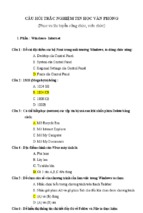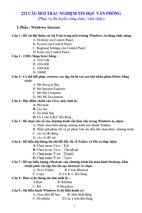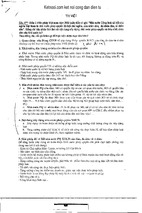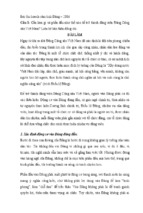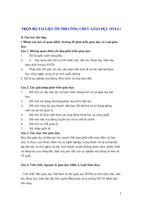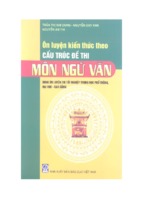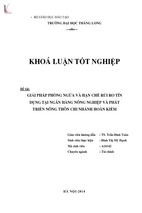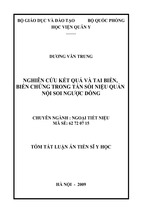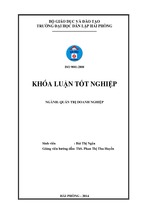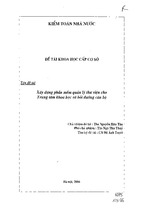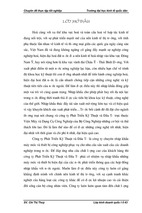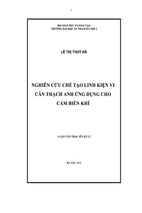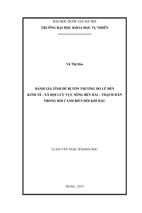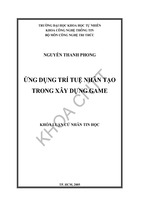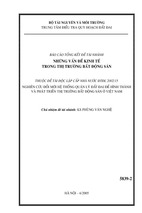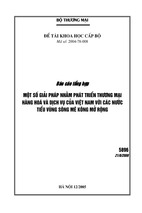Many monographs are either started with a preface or with acknowledgments.
As I see it, prefaces are usually written for two reasons: (1) deploring
one’s sufferings in writing the book, and (2) thanking various people for
their support. A chapter with acknowledgments usually just serves the latter
function. I have decided to restrict myself to acknowledgments – again
for two reasons: (1) It is probably obvious to most people anyway that writing
such a book is not a pleasure all the time and therefore I do not deem
it necessary to set off on a long rambling account of my writing experience.
At the same time, to me it certainly was a pleasure most of the time.
(2) This should be the place where after several years of support, patience
and endurance those people whose names are not on the cover, but who
have been supportive, patient and enduring, ought to be in the centre of
attention.
A Hybrid Theory of
Metaphor
Relevance Theory and Cognitive Linguistics
Markus Tendahl
Copyright material from www.palgraveconnect.com - licensed to Taiwan eBook Consortium - PalgraveConnect - 2011-03-02
A Hybrid Theory of Metaphor
10.1057/9780230244313 - A Hybrid Theory of Metaphor, Markus Tendahl
10.1057/9780230244313 - A Hybrid Theory of Metaphor, Markus Tendahl
Copyright material from www.palgraveconnect.com - licensed to Taiwan eBook Consortium - PalgraveConnect - 2011-03-02
This page intentionally left blank
A Hybrid Theory of Metaphor
Markus Tendahl
University of Dortmund, Germany
10.1057/9780230244313 - A Hybrid Theory of Metaphor, Markus Tendahl
Copyright material from www.palgraveconnect.com - licensed to Taiwan eBook Consortium - PalgraveConnect - 2011-03-02
Relevance Theory and Cognitive Linguistics
© Markus Tendahl 2009
No portion of this publication may be reproduced, copied or transmitted
save with written permission or in accordance with the provisions of the
Copyright, Designs and Patents Act 1988, or under the terms of any licence
permitting limited copying issued by the Copyright Licensing Agency,
Saffron House, 6-10 Kirby Street, London EC1N 8TS.
Any person who does any unauthorized act in relation to this publication
may be liable to criminal prosecution and civil claims for damages.
The author has asserted his right to be identified as the author of this work
in accordance with the Copyright, Designs and Patents Act 1988.
First published 2009 by
PALGRAVE MACMILLAN
Palgrave Macmillan in the UK is an imprint of Macmillan Publishers Limited,
registered in England, company number 785998, of Houndmills, Basingstoke,
Hampshire RG21 6XS.
Palgrave Macmillan in the US is a division of St Martin’s Press LLC,
175 Fifth Avenue, New York, NY 10010.
Palgrave Macmillan is the global academic imprint of the above companies
and has companies and representatives throughout the world.
Palgrave® and Macmillan® are registered trademarks in the United States,
the United Kingdom, Europe and other countries.
ISBN: 978–0–230–22793–4 hardback
This book is printed on paper suitable for recycling and made from fully
managed and sustained forest sources. Logging, pulping and manufacturing
processes are expected to conform to the environmental regulations of the
country of origin.
A catalogue record for this book is available from the British Library.
A catalog record for this book is available from the Library of Congress.
10 9 8 7 6 5 4 3 2 1
18 17 16 15 14 13 12 11 10 09
Printed and bound in Great Britain by
CPI Antony Rowe, Chippenham and Eastbourne
10.1057/9780230244313 - A Hybrid Theory of Metaphor, Markus Tendahl
Copyright material from www.palgraveconnect.com - licensed to Taiwan eBook Consortium - PalgraveConnect - 2011-03-02
All rights reserved. No reproduction, copy or transmission of this
publication may be made without written permission.
List of Figures
vii
List of Tables
viii
Typographical Conventions
ix
Acknowledgements
x
1
Introduction
1
2
The Relevance-Theory Approach to Metaphor
2.1 Grice’s theory of meaning and communication
2.2 The cognitive turn in pragmatics: relevance theory
2.2.1 The epistemology of communication: mutual
knowledge, mutual manifestness and mind-reading
2.2.2 Relevance, ostension and inference
2.2.3 The principles of relevance
2.2.4 Relevance-theoretic utterance interpretation
2.3 The explicit, the implicit and metaphors
2.3.1 Pragmatics and the explicit/implicit distinction
2.3.2 The standard pragmatic approach to metaphor
2.3.3 The original relevance-theory approach to metaphor:
descriptive and interpretive use
2.3.4 Recent developments in relevance theory:
ad hoc concepts
2.3.5 The cognitive effort of processing metaphors
2.3.6 Interactions between cognitive effects and effort
2.3.7 Cognitive effects and metaphor processing: a study
2.4 Pragmatics and the implicit: a conclusion
3
4
7
7
13
13
36
42
43
49
49
68
81
84
88
96
101
110
Cognitive Linguistics and Metaphor
3.1 General assumptions of cognitive linguistics
3.2 Metaphor as conceptualization:
conceptual metaphor theory
3.2.1 A modified invariance hypothesis
3.2.2 Why do we have the metaphoric concepts we have?
3.3 Metaphor and creative thinking: blending theory
112
112
Relevance Theory versus Cognitive Linguistics
4.1 Metaphor generality
4.2 Metaphor motivation
138
139
142
v
10.1057/9780230244313 - A Hybrid Theory of Metaphor, Markus Tendahl
114
116
122
130
Copyright material from www.palgraveconnect.com - licensed to Taiwan eBook Consortium - PalgraveConnect - 2011-03-02
Contents
Contents
4.3
4.4
4.5
4.6
4.7
4.8
4.9
4.10
Representation of metaphorical meaning
The online processing of metaphorical utterances
Context-sensitivity and pragmatic effects
Metaphor and polysemy
Metaphor acquisition
Relations to a wider theory of language use
Theory of mind: modularity vs. embodiment
New challenges
144
149
161
169
175
179
180
188
5
The Hybrid Theory of Metaphor
5.1
The foundations
5.2 Lexical semantics in the hybrid theory
5.3 Lexical pragmatics in the hybrid theory
5.3.1 The example tree
5.3.2 The example at
5.4 Lexical metaphoricity
5.4.1 Examples
5.4.2 The construal of metaphorical ad hoc concepts
5.5 The online dynamics of metaphor interpretation
5.5.1 An unprecedented crusade
5.5.2 The figurativeness of utterances
5.5.3 Some predictions of the hybrid theory of metaphor
192
192
197
200
203
206
210
211
218
220
222
239
242
6
Conclusion and Future Challenges
248
Notes
261
References
264
Index
275
10.1057/9780230244313 - A Hybrid Theory of Metaphor, Markus Tendahl
Copyright material from www.palgraveconnect.com - licensed to Taiwan eBook Consortium - PalgraveConnect - 2011-03-02
vi
2.1
3.1
3.2
4.1
5.1
5.2
5.3
5.4
5.5
5.6
5.7
5.8
5.9
5.10
5.11
5.12
5.13
5.14
5.15
Components of Grice’s MeaningNN
Conceptual integration network: This surgeon is a butcher
General mapping scheme of metaphorical blends
XYZ conceptual integration network:
Vanity is the quicksand of reason
Conceptual region
The conceptual region tree
Enrichment of an image schema of at – locational relation
Enrichment of an image schema of at – temporal relation
with TIME IS SPACE metaphor
Enrichment of an image schema of at – locational relation
with EVENT FOR PLACE metonymy
Enrichment of an image schema of at – directional relation
The mental space we
The network structure we have launched
The conceptual region unprecedented
The blend unprecedented event
The conceptual regions of crusade
The blend unprecedented crusade
The network structure we have launched an
unprecedented crusade
The blend raise standards
The network structure we have launched an
unprecedented crusade to raise standards
vii
10.1057/9780230244313 - A Hybrid Theory of Metaphor, Markus Tendahl
9
133
136
158
203
205
207
208
208
209
224
226
228
229
230
232
233
236
238
Copyright material from www.palgraveconnect.com - licensed to Taiwan eBook Consortium - PalgraveConnect - 2011-03-02
Figures
2.1
2.2
2.3
2.4
2.5
2.6
2.7
2.8
Examples of scenarios: positive metaphors
Examples of scenarios: negative metaphors
Positive metaphors
Negative metaphors
Mean ratings for statement 1
Mean ratings for statement 2
Mean ratings for statement 3
Mean ratings for statement 4
viii
10.1057/9780230244313 - A Hybrid Theory of Metaphor, Markus Tendahl
105
105
105
106
107
107
108
108
Copyright material from www.palgraveconnect.com - licensed to Taiwan eBook Consortium - PalgraveConnect - 2011-03-02
Tables
Typographical Conventions
–
–
–
–
metalinguistic uses, for example titles of works, examples without number, etc.
important terms which have not been mentioned and explained before
lexical concepts
general emphasis
Italics* with an asterisk are used for:
–
ad hoc concepts
SMALL CAPITALS
–
–
–
–
–
–
are used for:
conceptual domains
conceptual metaphors
conceptual metonymies
image schemas
mental spaces
thematic roles
CAPITALS are used for:
–
conceptual regions
ix
10.1057/9780230244313 - A Hybrid Theory of Metaphor, Markus Tendahl
Copyright material from www.palgraveconnect.com - licensed to Taiwan eBook Consortium - PalgraveConnect - 2011-03-02
Italics are used for:
Many monographs are either started with a preface or with acknowledgments. As I see it, prefaces are usually written for two reasons: (1) deploring
one’s sufferings in writing the book, and (2) thanking various people for
their support. A chapter with acknowledgments usually just serves the latter function. I have decided to restrict myself to acknowledgments – again
for two reasons: (1) It is probably obvious to most people anyway that writing such a book is not a pleasure all the time and therefore I do not deem
it necessary to set off on a long rambling account of my writing experience. At the same time, to me it certainly was a pleasure most of the time.
(2) This should be the place where after several years of support, patience
and endurance those people whose names are not on the cover, but who
have been supportive, patient and enduring, ought to be in the centre of
attention.
The first group of people I would like to thank are the ones who spent
so much time with me discussing the topics and chapters of this book. I
had the pleasure to spend the most rewarding discussions with my PhD
supervisors Prof. Dr Hans Peters, Dortmund University and Prof. Raymond
W. Gibbs, Jr, University of California at Santa Cruz, without whose help I
would never have started nor completed this project. Both have not only
accompanied my development as a young scholar, but have also become
friends.
The second group of people I would like to thank are the ones who were
always supportive in letting the first group of people capture so much of my
time. In the terms of relevance theory I could say that this group of people
has always spent a lot of effort in me, but has rarely gained the requisite
benefits.1 Among these people I want to specifically mention my partner
Heike and my parents who have always been supportive in any decision I
have made.
Furthermore, I want to thank Saskia Malan, Robert Krause and Daniel
Bücker who read chapters of the first draft of this book and made many
valuable comments.
All these people have been essential for this work, but without
institutional and financial support this book would never have been
printed either. Therefore, I take this opportunity to thank the wonderful English Department of Dortmund University, where I submitted an
earlier version of this book as my Ph.D. dissertation. I also thank the
Psychology Department of the University of California at Santa Cruz
for my stay there as a Research Associate, the Gesellschaft der Freunde der
x
10.1057/9780230244313 - A Hybrid Theory of Metaphor, Markus Tendahl
Copyright material from www.palgraveconnect.com - licensed to Taiwan eBook Consortium - PalgraveConnect - 2011-03-02
Acknowledgements
Acknowledgements
xi
Copyright material from www.palgraveconnect.com - licensed to Taiwan eBook Consortium - PalgraveConnect - 2011-03-02
Universität Dortmund for financially supporting my stay in Santa Cruz
and the DAAD (the German Academic Exchange Service) for providing a
grant also enabling me to spend valuable time in Santa Cruz with Prof.
Gibbs. Last but not least I want to thank Palgrave for being so patient
with me.
10.1057/9780230244313 - A Hybrid Theory of Metaphor, Markus Tendahl
10.1057/9780230244313 - A Hybrid Theory of Metaphor, Markus Tendahl
Copyright material from www.palgraveconnect.com - licensed to Taiwan eBook Consortium - PalgraveConnect - 2011-03-02
This page intentionally left blank
1
The main aim of this work is to make an original contribution to the study
of metaphors, or more particularly, to the study of how people ordinarily
use and understand metaphors in their daily lives. The phenomenon of
metaphor has fascinated scholars for at least two millennia and still there
are many open questions. Nonetheless, I do believe that the advances in
linguistics, philosophy and cognitive psychology over the past four decades have led to substantial insights into the significance and workings of
metaphors.
Various models describing the nature of metaphor have been put forward.
The classical model is often attributed to Aristotle’s Poetic and Rhetoric and
is called the comparison theory of metaphor. According to this model, metaphors are elliptical versions of similes or comparisons. Thus, a metaphor of
the form ‘A is B’ is the elliptical counterpart of the linguistic expression ‘A is
like B in respects X, Y, Z ...’ This model was proven wrong by many scholars.
One problem is that it presumes that metaphors cannot create similarities.
From this perspective, metaphors can only describe existing similarities.
However, research (cf. Lakoff and Johnson 1980; Reddy 1979/1993; Schön
1979/1993) has clearly shown that we use metaphors not only in order to
describe similarities, but also in order to create them or, more generally, to
conceptualize one conceptual domain in terms of a different conceptual
domain. Another problem the comparison theory of metaphor has to face
concerns the issue of how we process metaphorical language. Often, there
simply is no similarity between the vehicle (the conventional referent of a
metaphorical expression) and the topic (the actual unconventional referent).
This raises the question of how we manage to understand such metaphorical utterances, if there is no similarity that we can accept as the grounds of
the metaphor. Finally, Glucksberg (2001: 29–51; see also Glucksberg and
Haught 2006) offers many good reasons to reject the idea that metaphors
are implicit similes. For example, he points out that the vehicle of a metaphor (of the form A is B) refers to a new category, whereas the same term in
a simile (A is like B) refers to the literal concept.
1
10.1057/9780230244313 - A Hybrid Theory of Metaphor, Markus Tendahl
Copyright material from www.palgraveconnect.com - licensed to Taiwan eBook Consortium - PalgraveConnect - 2011-03-02
Introduction
A Hybrid Theory of Metaphor
In the 1950s and 1960s the pragmatics movement won widespread attention through seminal works by John L. Austin (1962), John Searle (1969) and
H. Paul Grice (1957, 1967). This was important for the study of metaphor,
as linguists began studying contextual influences on utterance comprehension. Furthermore, the significance of inferential abilities in communication and the functions for which speakers use language were taken into
account. All of these issues are highly significant for the study of language
and metaphor, and therefore pragmatic theories of metaphor were able to
give rise to important advances in metaphor research. The standard pragmatic model of metaphor, which was predominantly developed by H. Paul
Grice (1967, 1975) and John Searle (1979/1993), was beneficial for research
on metaphor, because it emphasized that metaphors rely heavily on inferences and on speakers’ intentions. However, it also incorrectly assumed that
metaphors are only used for special purposes and that literal language has
priority over metaphorical language. These assumptions are no longer supported by current theories of metaphor due to a number of theory-internal
and psycholinguistic counterarguments.
An alternative approach to language and cognition within a pragmatics
framework is offered by relevance theory (Sperber and Wilson 1986). Relevance
theory also considers the discourse context as being utterly fundamental
to language understanding and stresses the importance of our inferences
in communication. However, in contrast to other pragmatic approaches,
relevance theory focuses explicitly on the cognitive background of communication. With respect to metaphor theory, relevance theory has the
clear advantage over other pragmatic theories of metaphor that it does not
presume that metaphor processing is different from the processes involved
in understanding literal language. Quite to the contrary, metaphors are
regarded as just one particular kind of the loose use of language. Metaphors
are considered as a common way of achieving optimal relevance. Thus, relevance theory offers a sophisticated model that makes suggestions about how
we process metaphors, and it also takes into account the cognitive abilities
which are necessary to comprehend metaphors. In spite of this, the theory
struggles with difficulties regarding its descriptive and explanatory possibilities concerning the interpretation of metaphors. I suggest that this is
predominantly due to the fact that relevance theory has largely ignored
the systematic and pervasive nature of metaphors in language and thought.
This, however, is a topic that has been studied extensively by cognitive
linguists.
Cognitive linguistics offers another cognitive, but in many respects different, orientation towards metaphor. In contrast to relevance theorists, cognitive linguists presume that language is not an isolated system. They believe
that language is a cognitive ability that is intricately intertwined with general cognitive abilities which are deeply influenced by our cultural and
bodily experiences of the world. George Lakoff and Mark Johnson’s (1980)
10.1057/9780230244313 - A Hybrid Theory of Metaphor, Markus Tendahl
Copyright material from www.palgraveconnect.com - licensed to Taiwan eBook Consortium - PalgraveConnect - 2011-03-02
2
pioneering work on conceptual metaphor has set in motion a whole new
way of looking at metaphors. The main assumption underlying the conceptual metaphor approach is that metaphor is not primarily a phenomenon of
language, but rather a phenomenon of thought. Conceptual metaphor theorists suggest that we use metaphors in order to make sense of our ordinary
experiences of the world. Many concepts cannot be understood directly, and
in these cases we use our knowledge of one tangible and well-understood conceptual domain in order to conceptualize another domain. This approach
has initiated an enormous flood of publications on conceptual metaphor
theory, and we owe many significant insights to this research conducted
by cognitive linguists and psycholinguists (for a survey see Gibbs 1994).
Thus, cognitive linguists have always focused on metaphor in thought, but
initially their main interest had not been to present a processing model
of metaphor. This is a shortcoming that was repaired to some extent by
the work of cognitive linguists working in the framework of blending theory
(Fauconnier and Turner 1998, 2002). These scholars also adhere to general
assumptions shared by all cognitive linguists, but unlike conceptual metaphor theory, blending theory gives the online processing of metaphors some
serious attention.
Thus, there have been two major developments in theorizing about metaphor during the past four decades: the pragmatic approach and the approach
from cognitive linguistics. Relevance theory is certainly a pragmatic theory
in the first place, but it has much in common with cognitive linguistics as
well. Therefore, I consider it a fruitful project to combine central ideas from
relevance theory and cognitive linguistics in order to create a more comprehensive hybrid theory of metaphor. I call it a hybrid theory, as it is deeply
influenced by both relevance theory and cognitive linguistics. However, it is
not a theory that can be seen as a version of a relevance-theoretic approach
to metaphors, nor is it an approach that can be viewed as a version of conceptual metaphor theory or blending theory. My hybrid theory of metaphor
rather attempts to combine the advantages of various existing theories of
metaphor and discard their disadvantages. On top of that, the hybrid theory
of metaphor makes unique and original suggestions and predictions that
none of the two theories have made.
So far, the relationship between relevance theory and cognitive linguistics could have been described as something in between mutual rejection
and mutual ignorance. I see two main reasons for this. First, some of the
theoretical core assumptions of relevance theory and cognitive linguistics
differ fundamentally. For example, relevance theory claims that our cognition is modularized with many autonomous modules executing domainspecific tasks. This is a position that cognitive linguists reject fervently.
Hence, it is probably the case that many scholars working in either of the
two frameworks could not imagine that there is potential for cooperation.
Secondly, I assume that many scholars from both camps have not studied
10.1057/9780230244313 - A Hybrid Theory of Metaphor, Markus Tendahl
Copyright material from www.palgraveconnect.com - licensed to Taiwan eBook Consortium - PalgraveConnect - 2011-03-02
Introduction 3
A Hybrid Theory of Metaphor
the other theory closely enough. If this is true, then a certain lack of knowledge is perhaps one reason for the mutual ignorance. The structure of the
present work reflects these considerations. In order to achieve theoretical
credibility, I consider it useful to start this work with a critical overview of
the developments in pragmatics and cognitive linguistics. After that, I will
compare the two theories along the lines of several topics which are crucial
in any theory of metaphor. Finally, I will present the hybrid theory of metaphor, and I will end this work with a summary of its main results and a look
at future challenges.
In the following chapter I will examine influential developments in pragmatics with special emphasis on the question of how pragmatics deals with
implicit language in general and metaphor in particular. In order to have
a basis for doing this, I will start by briefly presenting Grice’s theory of
meaning and communication, which will be followed by a presentation of
relevance theory. One of relevance theory’s important, but also problematic, contributions to pragmatics is their idea of how interlocutors manage
to coordinate the assumptions which are critical in discourse. Therefore,
the section on relevance theory will have a special focus on this issue. In a
subsequent section I will critically discuss pragmatic approaches to explicitness and implicitness proposed by François Recanati, Kent Bach and relevance theorists such as Deirdre Wilson, Dan Sperber and Robyn Carston.
After this general introduction into the ways pragmaticists view implicit
language, I will present the standard pragmatic approach to metaphor and,
most importantly, various lines of criticism against this approach. As an
alternative theory of metaphor in a pragmatic framework, I will then discuss
the relevance-theory account of metaphor, which is not susceptible to the
criticism put forward against the standard pragmatic approach. Nevertheless,
this view has, besides all its advantages, some problems that will also be
addressed. For example, in Section 2.3.5 I will critically discuss the predictions that relevance theory makes concerning the effort involved in processing metaphors. In Section 2.3.6 I will discuss the claims that relevance
theory makes concerning the relationship between cognitive effort and cognitive effects. Section 2.3.7 will present the results of a study conducted by
Gibbs and Tendahl (forthcoming) on the cognitive effects communicated
by metaphors. This study underlines the importance of the contribution
that relevance theory makes to the study of metaphor.
In Chapter 3 I will provide brief outlines of cognitive linguistics in general,
of conceptual metaphor theory and of blending theory. In the section on
conceptual metaphor theory, I will critically discuss the invariance hypothesis, which makes predictions about metaphorical entailments. Furthermore,
I will specifically emphasize the importance of cognitive linguistic research
on the motivation for metaphors, i.e. I will deal with the question of why
we have the particular metaphors which pervade our language and thought.
In the section on blending theory, I will devote particular consideration
10.1057/9780230244313 - A Hybrid Theory of Metaphor, Markus Tendahl
Copyright material from www.palgraveconnect.com - licensed to Taiwan eBook Consortium - PalgraveConnect - 2011-03-02
4
to questions regarding the online processing of metaphors that conceptual
metaphor theory does not address.
Having introduced the most important developments in pragmatics and
cognitive linguistics, I will systematically compare these two directions of
research in Chapter 4. The need for such a systematic juxtaposition of ideas
in order to advance research on metaphor has also been recognized by Adrian
Pilkington (2000) in his relevance-theory inspired book Poetic Effects:
At first glance there seems to be a certain amount of common ground
between this approach [the conceptual metaphor approach] and that of
relevance theory: both approaches are cognitive and both emphasise that
metaphor is a natural non-deviant feature of language use, that metaphorical utterance interpretation does not involve calculating and then
rejecting a literal meaning in favour of an alternative figurative meaning.
Lakoff and Turner (1989) are also interested in developing an account of
poetic metaphor. At second glance, however, there are a number of significant differences. A detailed analysis that compares and contrasts the
two approaches would be valuable. (Pilkington 2000: 108)
Chapter 4 will do exactly what Pilkington advocates – it will provide a
detailed analysis of what both theories have in common and it will also
show where they differ. In order to accomplish this, I will select nine criteria
along which I compare the theories.
Based on this comparison, I will develop the hybrid theory of metaphor
in Chapter 5. The first part of the hybrid theory is a proposal on how we
construct ad hoc concepts while processing utterances. The hybrid theory
of metaphor posits that words have pointers to so-called conceptual regions
which serve as blueprints for the creation of ad hoc concepts. These conceptual regions contain context-independent information, called the inherent domain, and context-dependent information. Via connectors they are
connected to external knowledge structures, such as conceptual domains,
metaphors or metonymies, image schemas, scripts, etc. Which elements
from external knowledge structures eventually enter the ad hoc concept is
determined by relevance-driven selection processes. Only elements which
contribute to the overall relevance of the utterance will enter the ad hoc
concept. In order for an external element to be relevant, it must be easily
accessible. Therefore, one of the relevance-theory-inspired assumptions of
the hybrid theory is that connectors get activated if the according external knowledge structures match assumptions in a person’s cognitive environment that are held in a strongly manifest fashion. If such a match is
detected and the degree of activation is sufficient, then the connectors may
be activated and specify an ad hoc concept that will become part of a larger
network structure that represents meaning. Thus, expectations of relevance
play a decisive role in generating figurative meanings.
10.1057/9780230244313 - A Hybrid Theory of Metaphor, Markus Tendahl
Copyright material from www.palgraveconnect.com - licensed to Taiwan eBook Consortium - PalgraveConnect - 2011-03-02
Introduction 5
A Hybrid Theory of Metaphor
On the basis of these general considerations, I will explore the nature of
metaphorical ad hoc concepts. A major defining feature of metaphorical
concepts is that these concepts are predominantly profiled against external knowledge structures, whereas literal concepts are profiled against the
inherent domain. Obviously, the hybrid theory of metaphor is based on a
thorough description of the lexical processes involved in utterance interpretation. I consider this important, because the hybrid theory respects
the fact that the online processing of utterances works incrementally. This
entails that analysing processes on utterance level can only work if more
fine-grained processes on a lexical level are devoted serious attention.
Having discussed the lexical semantics and pragmatics of metaphorical
utterances, I will examine the processes involved on the level of utterances.
The idea from blending theory that complex network structures of mental
spaces are built up during utterance comprehension seems to be best suited in
order to capture the dynamics of utterance comprehension. These processes
do not work according to the principle of compositionality, which would
imply that the meaning of a sentence is the composite meaning of its constituent meanings. The detailed discussion of an example in Section 5.5.1
will instead show that the construction of the network structure of mental
spaces representing comprehension processes on utterance level is characterized by a substantial interaction between the context, expectations of
relevance and the structure of the involved conceptual regions. These interactions can lead to an increase in our perception of figurativeness. Thus, the
figurativeness of an utterance is not just proportional to the figurativeness
of single constituents, but the combination of constituents can contribute
to the level of figurativeness. In Chapter 5 I will explain these ideas, the sum
of which I call the hybrid theory of metaphor, in detail.
10.1057/9780230244313 - A Hybrid Theory of Metaphor, Markus Tendahl
Copyright material from www.palgraveconnect.com - licensed to Taiwan eBook Consortium - PalgraveConnect - 2011-03-02
6
2
This chapter presents an approach to metaphor that has largely been ignored
by scholars of metaphor: the relevance-theory approach to metaphor. I consider this situation unfortunate, because relevance theory, as a cognitive
pragmatic view on language and communication, can make very important
and unique contributions to the study of metaphor. I will start this chapter
by first giving a very brief overview of Gricean pragmatics, because although
relevance theory differs from Gricean pragmatics in many respects, it is
fundamentally based on core assumptions introduced by Grice. Then I will
present an overview of the current state of relevance theory and finally I
will critically discuss the advantages and problems of the relevance-theory
approach to metaphor.
2.1 Grice’s theory of meaning and communication
Within the first half of the nineteenth century, philosophers dealing with
truth-conditional semantics were occupied with placing the study of meaning within the larger philosophical doctrine of logical positivism. The works
of philosophers such as Gottlob Frege (1848–1925) and Bertrand Russell
(1872–1970) were concerned with translating natural languages into scientifically adequate and accurate artificial languages. The truth-conditional
theory of meaning, which was based on these ideas, was dedicated to the
belief that to determine the meaning of a sentence is to know the conditions under which it would be true. Thus, knowing the meaning of a sentence amounts to knowing whether a given sentence in a given world is true
or false. This account of meaning is seriously restricted as it can only be
sensibly applied to declarative sentences. Furthermore, recent research has
come to the conclusion that even the meaning communicated by a literally
intended declarative utterance goes well beyond anything that truth conditions could purport.
The major change in philosophizing about the meaning of utterances
came about with the pragmatic turn in the 1950s and 60s. At that time,
7
10.1057/9780230244313 - A Hybrid Theory of Metaphor, Markus Tendahl
Copyright material from www.palgraveconnect.com - licensed to Taiwan eBook Consortium - PalgraveConnect - 2011-03-02
The Relevance-Theory Approach
to Metaphor
- Xem thêm -

